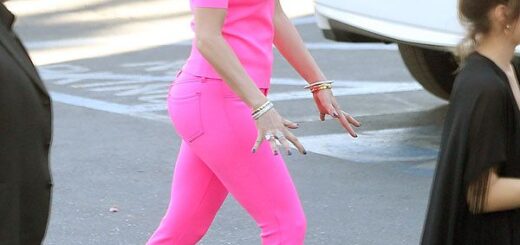Behind Bars and Under Guard: A Woman’s Journey Through Justice
In the stark silence of a prison hallway, footsteps echo—slow, measured, heavy. A woman in handcuffs walks forward, her eyes fixed on the ground, as a police officer follows closely behind. The image is simple, but the story it carries is anything but.
This is the daily reality of Elena M., a 34-year-old woman whose life has taken a dramatic turn from freedom to confinement. Accused of financial fraud and awaiting trial, Elena’s case has drawn public attention not only because of the charges, but because of the human face behind them—a face once seen in classrooms as a teacher, not in courtrooms as a defendant.
Her journey through the justice system began nearly two years ago, when discrepancies were found in school funding records linked to her administrative role at a local education board. What followed was an investigation, public scrutiny, and ultimately, her arrest. Elena has maintained her innocence throughout, claiming she was set up and that the real culprits remain untouched.
> “This isn’t just about numbers or missing money,” her attorney said in a recent interview. “It’s about a woman who trusted the wrong people and is now fighting for her name, her freedom, and her dignity.”
In prison, Elena is described as quiet, cooperative, and deeply reflective. Officers say she spends most of her time reading, writing letters to her daughter, and keeping to herself. “She’s not like the others,” one guard admitted. “There’s something heavy in her eyes—like someone who still doesn’t believe she’s here.”
The justice system is now at a crossroads with her case. Evidence is still being reviewed, and while the prosecution insists on a full trial, public opinion remains divided. Some see her as a scapegoat, others as a symbol of the consequences of white-collar crime.
The image of Elena—behind bars, under guard—isn’t just a snapshot of guilt or punishment. It’s a reflection of how thin the line can be between law and life, between choices made and consequences faced. Her story, though not yet concluded, speaks to a larger truth about justice: that it’s not always black and white.

